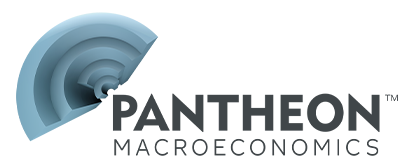China+ Publications
Below is a list of our China+ Publications for the last 5 months. If you are looking for reports older than 5 months please email info@pantheonmacro.com, or contact your account rep
Please use the filters on the right to search for a specific date or topic.
Duncan Wrigley
- China’s manufacturing PMIs indicate domestic demand remains lacklustre.
- A rebound in builders’ sentiment offers hope that the policy-bank funding support will gain purchase.
- China is likely to opt for targeted support, like expanded consumer subsidies at this month’s Politburo meeting
RatingDog PMI stung by waning domestic demand, despite buoyant overseas orders
Korean manufacturing index treading water
Tokyo inflation slows slightly, with hints of steady wage inflation going into 2026
- Tokyo inflation edged down to 2.7% year-over-year in November, but the BoJ will focus more on the markets.
- Government claims that total borrowing this year will less than last year have provided reassurance for now.
- The 2026 wage outlook looks reasonably promising, despite the earlier profit hit to automakers from tariffs.
- - CHINA LIKELY TO FOCUS ON EBBING DOMESTIC ACTIVITY
- - BOJ DECEMBER RATE HIKE BACK ON THE TABLE
- - KOREA’S CONSUMER CONFIDENCE REBOUND
- China’s new promotion scheme to raise consumption issued yesterday is old wine in new wineskins.
- The scheme focuses on boosting supply, without addressing the root causes of dull consumer demand.
- Bright spots amid the gloom include rising spending on consumer services, like sports and tourism.
In one line: exports hold up ahead of row with China
- China’s residential property market is weakening again, in the absence of robust new policy support.
- Broad inventory needs another 18 months to bottom out, but even that depends on sentiment stabilising.
- A modest rise in land sales this year, albeit from a very low base, is a flickering ray of light.
- Japan’s Q3 GDP shrank, hit by weaker net exports, a slower inventory rise and falling residential investment.
- The government aims to secure a larger supplementary budget than in 2024, leading to bond-market worries.
- The diplomatic spat with China over Taiwan could put a 0.3pp dent in GDP growth if Chinese tourism stops.
Weak net exports of goods and tourism hit growth
Private consumption was sluggish
Business non-residential investment was resilient
- China’s arithmetic fall in exports in October is mainly due to calendar effects, rather than a demand slump.
- Shipments to non-US markets dropped sharply, while exports to the US were still weak but didn’t worsen.
- Export growth is likely to slow next year, given limited capacity for the Global South to absorb rapid rises.
Full-time regular pay growth slowed a tad
Real wages extended their decline in September
Efficiency gains help profits but hurt labour demand
- China’s household saving rate has fallen, implying greater readiness for consumption spending...
- ...But not by enough to make up for the slump in residential sales since 2019; no wonder demand is soft.
- The October RatingDog services PMI reports efficiency gains; good for profits, but bad for jobs short term.
Investment stimulus should lift China's manufacturing index from October's trough
Tokyo inflation bump driven by local water subsidy expiry
- China is countering its investment slump by approving an additional RMB500B in local-government bonds...
- ...And driving though the disbursal of RMB500B in policy-bank funds for investment projects.
- This should boost the official manufacturing index from its October trough.
- President Xi’s commentary on Tuesday confirms an industry-first view of growth...
- ...with the domestic economy serving mainly as a hedge against external uncertainties.
- China will stick to manufacturing-led growth, with only modest support for domestic demand and property.
- Japan’s headline inflation ticked up in September, owing to higher energy inflation.
- The new Prime Minister, Sanae Takaichi, said on Friday that addressing inflation was her top priority.
- The October flash PMIs point to a broad weakening in activity, both manufacturing and services.
In one line: BoJ won’t be shocked by modest rise in inflation; likely to hold rates next week waiting for clarity on the new government’s fiscal easing
- The BoK held the policy rate yesterday, while signalling its readiness for a rate cut next month...
- ...But only if the KRW stabilises, in turn resting on US-Korea talks, and if the Seoul property market cools.
- China’s Fourth Plenum signalled continued reliance on the manufacturing-export growth model.
